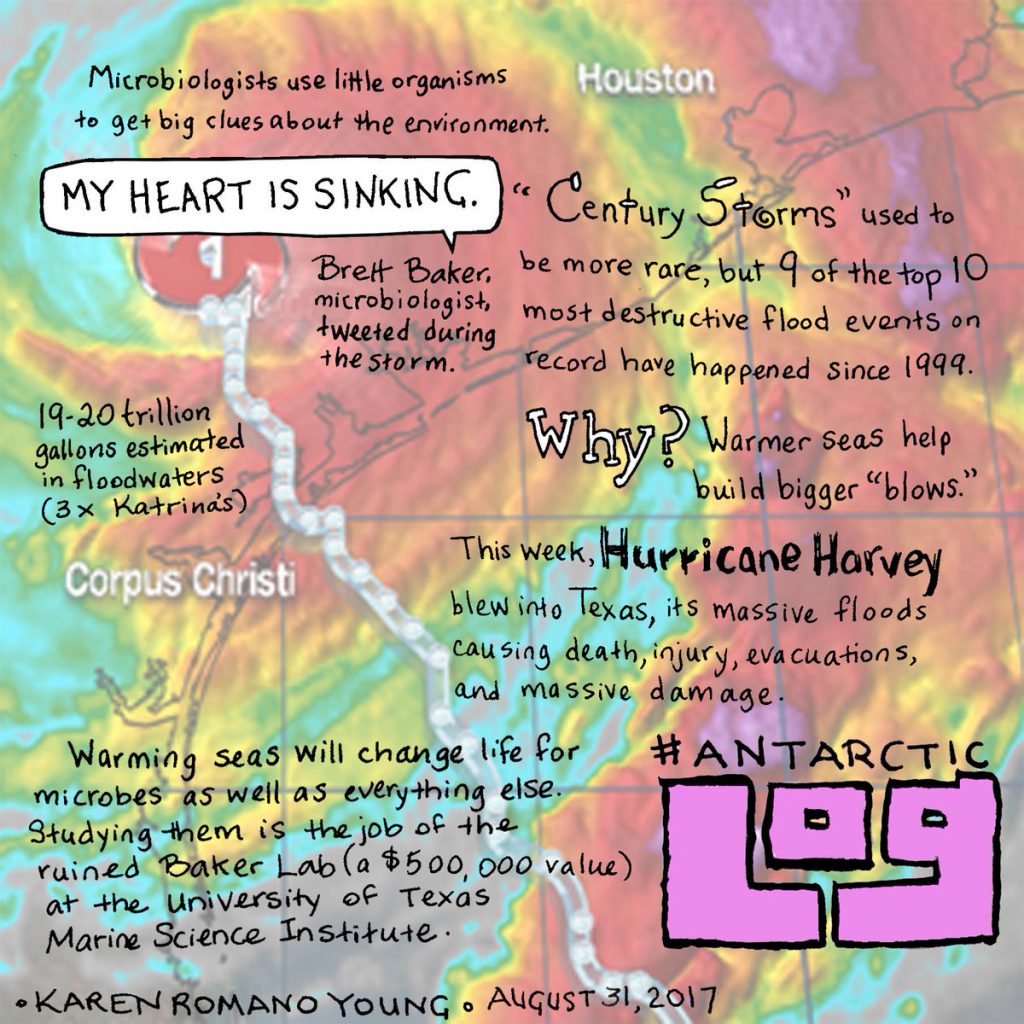We’re now mid-way through the first year of the AAAS Community Engagement Fellows Program (CEFP), funded by the Alfred P. Sloan Foundation. The first cohort of Fellows is made up of 17 scientific community managers working with a diverse range of scientific communities. As they continue to develop their community engagement skills and apply some of the ideas and strategies from their training, the Fellows will report back on the Trellis blog, sharing their challenges, discoveries, and insights. Over the last several days, Fellow Elisha Wood-Charlson has reflected on the role of a community manager during a national emergency.
Posted by Elisha Wood-Charlson, Data/Research Communications Program Manager for the Simons Collaboration on Ocean Processes and Ecology

28 August 2017
As the devastation of Hurricane Harvey continues to cripple the metropolis of Houston, Texas, I feel helpless, but also grateful. Grateful that a community – networked online – allows a person to quickly report they are safe with a single tweet saying they have found sanctuary outside the flood zone.
As a fledging scientific community manager working to find solutions to our community’s research challenges in the age of big data, I was not prepared for the feeling of helplessness that came when Hurricane Harvey hit the University of Texas Marine Science Institute (UTMSI) where Professor Brett Baker and his lab call home. While I have a personal connection to the Baker lab, after hosting several Baker lab members for a community workshop just last summer, I realized I had lost connection to the physical places behind the online community.
Now, those people very same people are unsure if they have homes or a science lab left. A press release from UT News on 27 August confirmed that several buildings experienced roof failures. Brett’s twitter update – “I just hope the plastic we put over it [lab equipment] all stay[ed] in place!”
But what happens next? What is the role of an online community during a crisis?
As a community manager, I don’t have any answers, and would be grateful for suggestions! All I can do is proclaim my pride and admiration for the inherent strength and resolve of my community. Within 24hrs of Brett’s initial tweet about the disaster he, his family, and his lab were facing, there was an outpouring of support from the community, from offers to host students and postdocs in other labs or backup data on remote servers to a spreadsheet for listing lab equipment available for donation.
And my community was not alone. The March for Science – Houston twitter account was alive with tweets organizing a database of labs willing to host specimens, animals, and/or scientists using the #SciHelpTX. All sparked by a tweet, and at last count, there were 196 volunteer labs. Oops, make that 199!
30 August 2017
Great news from the Baker lab on social media today! Their building may not have a roof, but their low-tech plastic wrapping saved most of their high-tech lab equipment, and their data server even seemed to have survived. As our online community rejoices this amazing news, we still understand that it will be months before the Baker Lab will be home again and fully operational. Everyone in the Baker lab is passionate, committed, and hard working, and they produce fantastic science, so I am just happy that their science will go on. I sincerely hope that members your online communities were as lucky.
31 August 2017
Thank you to Karen Romano Young for illustrating the reality of Hurricane Harvey and its impact on the Baker lab this week and mahalo to Pete Girguis (Harvard) for helping organize efforts to help the Baker lab. Hurricane Harvey was a wake-up call and a reminder that members in my online communities have places they call home. As the country mobilizes to help Houston recover, perhaps we should consider developing our own community disaster preparedness plans. For me, this week began with feelings of despair and frustration. As an online community manager, I could only watch and wait for the social media ping that our members were safe. And while I didn’t, and still don’t, know the best way to help as an individual, my community – and the greater science community as a whole – are finding a way.
You can find all of the CEFP Fellows’ posts here.